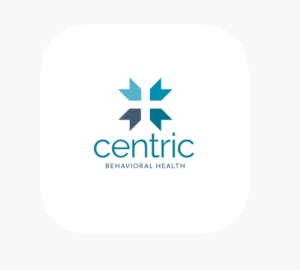Emotions play a crucial role in how we live and interact with other people. In this article, we explore the different types of basic human emotions and how they impact human behavior.
Types of Basic Human Emotions
Generally, humans experience six basic emotions. These include:
- Happiness
- Sadness
- Disgust
- Fear
- Surprise
- Anger
Now let’s look at each of these in detail.
Happiness
Happiness is a pleasant emotion characterized by feelings of contentment, joy, gratification, satisfaction, and general well-being. When we experience happiness, our brain releases neurotransmitters like dopamine and serotonin, which trigger a series of positive physical effects. The heart rate and breathing slow down, blood pressure drops, and facial muscles relax into a smile.
Happiness serves important adaptive functions. It encourages us to engage in activities that promote survival and reproduction, such as forming social bonds, achieving goals, and engaging in pleasurable activities. Ideally, this emotion encourages us to repeat behaviors that ensure our overall well-being.
Sadness
Unlike happiness, sadness is an emotion characterized by feelings of grief, sorrow, and melancholy. When we feel sad, our bodies respond with physical signs like drooping posture, slowed movements, and a heavy, tired sensation. Tears may flow as the body releases stress hormones like cortisol, triggering a desire to withdraw and rest.
Sadness likely evolved as a response to significant losses or threats, such as the death of a loved one or the end of an important relationship. Sadness offers a great way to cope with adversity and recover from setbacks—it tells our brain to slow down, reflect, and seek social support when going through tough moments. It also signals to others that we need care and comfort, which helps strengthen social bonds.
Fear
Fear is an emotion we experience when we perceive danger or threat. When we feel afraid, our bodies go into a state of high alert—the heart rate and breathing quicken, muscles tense, and the senses become heightened. This physiological response prepares us to either fight the threat or flee to safety.
Fear is a crucial emotion that has helped humans avoid or confront dangerous situations. It is a protective mechanism that helps us to quickly detect and respond to threats in our environment. Fear triggers the fight-or-flight response that enables us to take quick action to ensure our survival.
Types of Basic Human Emotions
Anger
Anger is another basic emotion characterized by feelings of hostility, irritability, and a strong urge to take action. When we experience anger, our bodies release adrenaline and cortisol. In turn, this makes us experience increased heart rate, blood pressure, and muscle tension. In addition, the face may flush, and the body may become tense and ready for action.
Anger likely evolved as a response to perceived injustice, threats to our well-being, or obstacles to achieving our goals. By motivating us to confront the source of our anger, this emotion helps us defend our rights, protect our resources, and assert our dominance within social hierarchies. Anger can also promote courage and drive positive change when channeled appropriately.
Disgust
Disgust is an emotion triggered by the perception of something offensive or unpleasant. Disgust responses include nausea, decreased appetite, and a desire to distance oneself from the source of the disgust.
Disgust is a protective mechanism that helps humans and other animals avoid the consumption of potentially harmful substances, such as spoiled food or infectious agents.
Surprise
Surprise is an emotional response triggered by the unexpected or unfamiliar.
Ideally, surprise emotion is a response to sudden changes in our environment that allow us to change our current behavior and direct our attention to an unexpected event. This quick response enables us to assess the situation and determine an appropriate course of action—it can be adapting to the new situation or fleeing.
The Influence of Emotions on Human Behavior
Having looked at the different types of human emotions, you may be wondering how they impact our behavior. We shall look into that in this section.
Emotion and Decision-Making
Emotions play a crucial role in the decision-making process. Emotions help us assess the potential consequences of our actions and encourage us to pursue options that align with our values and desires.
For example, the thrill of risk-taking may lead someone to choose a more adventurous path, even if it’s not the most pragmatic option. Conversely, the fear of failure can cause someone to play it safe and opt for the less risky choice.
The interplay between emotion and cognition
Emotions and cognition (our ability to think, reason, and process information) are closely interconnected. While emotions can influence our decision-making, our cognitive processes also shape how we experience and respond to emotions.
For instance, our ability to regulate our emotions, reframe negative thoughts, and consider different perspectives can significantly impact how we feel and, in turn, how we behave.
Human Emotions and Social Interactions
Our emotions determine how we communicate and connect with others. The way we express our emotions, whether through verbal cues, facial expressions, or body language, impacts the quality of our relationships. For example, a warm and genuine smile creates feelings of trust and closeness, while a frown or scowl can create tension. One needs to learn how to communicate their emotions effectively to build stronger and more fulfilling interpersonal connections.
Human Emotions and Mental Health
The ability to effectively regulate our emotions is closely tied to our overall mental health and well-being. When we struggle to manage our emotions, it can lead to a range of negative outcomes, such as increased stress, anxiety, depression, and even physical health problems.
Conversely, developing healthy emotional regulation strategies, such as mindfulness, cognitive-behavioral techniques, and seeking social and mental support, can help us maintain a better sense of emotional balance and resilience in the face of life’s challenges.
In addition, we can cultivate positive emotions by practicing gratitude, engaging in activities that bring us joy, surrounding ourselves with supportive social connections, and adopting a growth mindset.















